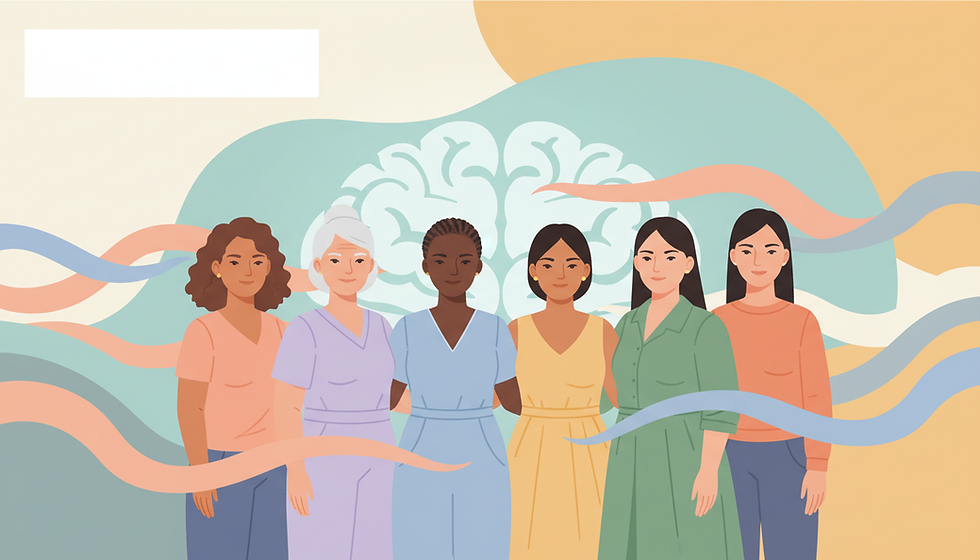Neuroscience
- Helen Day
- Apr 9, 2023
- 3 min read
ADHD or Attention Deficit Hyperactivity Disorder is a medical term to describe a set of actions or behaviours that can affect both children and adults. It is a physical difference in the brain that affects all aspects of a person's being. There are psychological, physical and emotional challenges and behavioural characteristics of ADHD.
Unfortunately the linguistic difference between mental and physical health still encourages many people, including many health care professionals to assume that mental disorders are fundamentally different from physical conditions and that someone with ADHD should control his or her behaviour through sheer will and determination. The truth is there is no reason that someone with ADHD should be able to exert any more control over their ADHD symptoms than someone with poor eyesight, diabetes or asthma.
ADHD is exhibited in a range of symptoms, but is diagnosed through three primary areas: inattention, hyperactivity and impulsivity. These symptoms can show up in a wide range of behaviours depending on the person, including chronic forgetfulness, being disorganised, an inability to finish projects, inability to sit still etc. We will go through these in great detail later. Even though nearly anyone can be distracted or forgetful at times, the difference is that for people with ADHD, it's constant and persistent and significantly interferes with their life and ability to succeed socially, academically, personally and professionally.
The chemistry of ADHD brains are different.
The brain is a network where messages are relayed from one neuron or brain cell to the next. There is a gap between neurons, which is called a synapse. For the message to be passed along in the brain, the synapse needs to be filled with neurotransmitters. Neurotransmitters are chemical messengers, and each one is responsible for a different function. The key neurotransmitters for ADHD are dopamine and adrenaline. In the ADHD brain, there is a dysregulation in the dopamine system. There is either too little dopamine, not enough receptors to receive the dopamine on the other side of the synapse, or the dopamine is not being used efficiently. Stimulant medications help ADHD because they encourage more dopamine to be produced or keep dopamine in the synapses longer.

The structures of ADHD brains are different.
In 2017, MRI scans of more than 3,200 people including children and adults with ADHD revealed structural differences in neurotypical and ADHD brains. Let's have a look at what this means.
The frontal and prefrontal lobes which are typically much smaller in ADHD brains. This is where your execute function is. Executive function and self-regulation skills are the mental processes that enable us to plan, focus attention, remember instructions, and juggle multiple tasks successfully. It is where you can tell yourself what to do. There is also a decrease in blood flow to these prefrontal areas in the brain, exacerbating executive functioning struggles.
The limbic system is involved in our behavioural and emotional responses, especially when it comes to behaviours we need for survival: feeding, reproduction and caring for our young, and fight or flight responses. This almond shaped structure at the bottom here is the Amygdala and is the centre for emotions, emotional behaviour and motivation and is typically smaller in an ADHD brain. This puffy sausage next to it is the Hippocampus. It plays a large role in learning, memory and emotion. The MRIs found that the size difference of the hippocampus was particularly evident in children with ADHD.
The basal ganglia is a group of nuclei responsible primarily for motor control, as well as other roles such as motor learning, executive functions and behaviours, and emotions. When your body wants to move, it sends messages to the putamen and caudate nucleus which then takes the brakes off the basal ganglia and allows controlled movement in your body. In the basal ganglia is also the nucleus accumbens, which is considered as the neural interface between motivation and action, playing a key role on feeding, sexual, reward, stress-related, drug self-administration behaviours, etc. All three of these areas are also smaller in an ADHD brain.

The functions of ADHD brains are different.
All brains have a "default mode network" (DMN). This is the mode your brain is in when it is resting, it is the mode you are in when you look out the window and get lost in your thoughts, joys, worries, the past, the future, who we are. It is a dreamy state of mind. The DMN is important because it sorts through what information and memories to keep and what to let go of in our sleep.
However, when it's time to go to work on goal-directed tasks, the DMN in a neurotypical brain will quiet down and engage attention pathways to focus on the task at hand. This is called the task positive network (TPN). For people with ADHD brains, the DMN remains active and they stay in a creative, introverted, compulsive thinking mode. As a side note, mindfulness and meditation actually teach the brain to switch between these two networks.





Comments